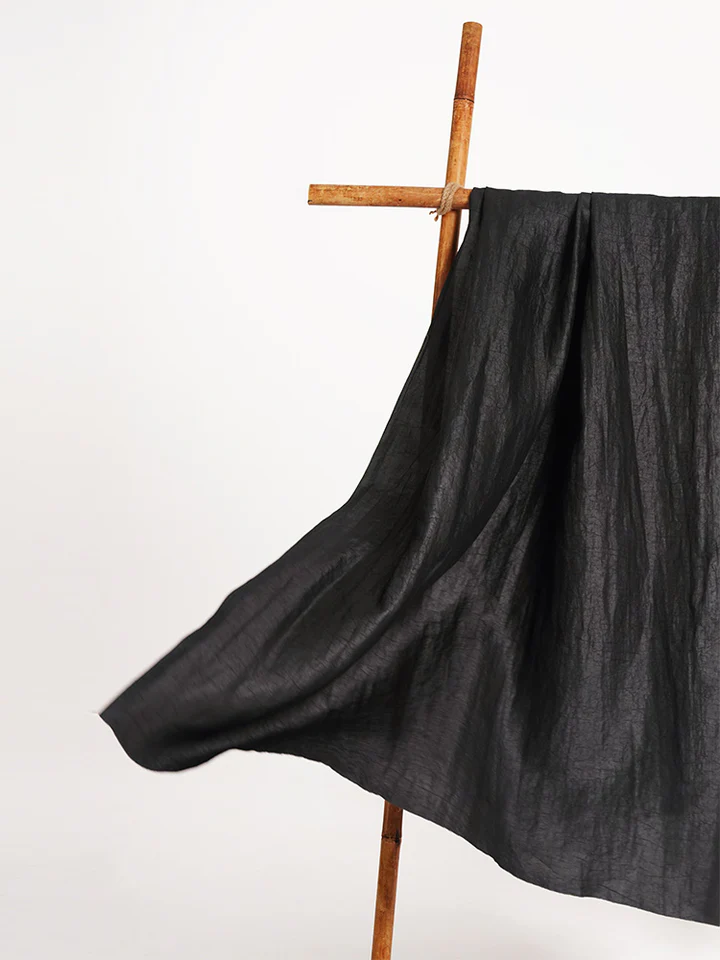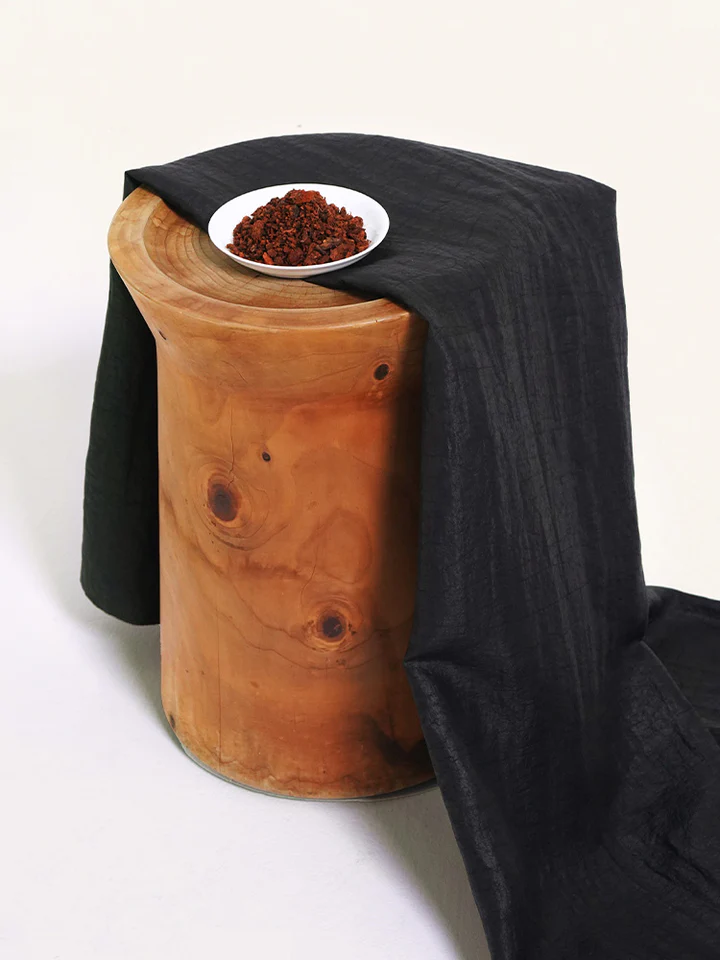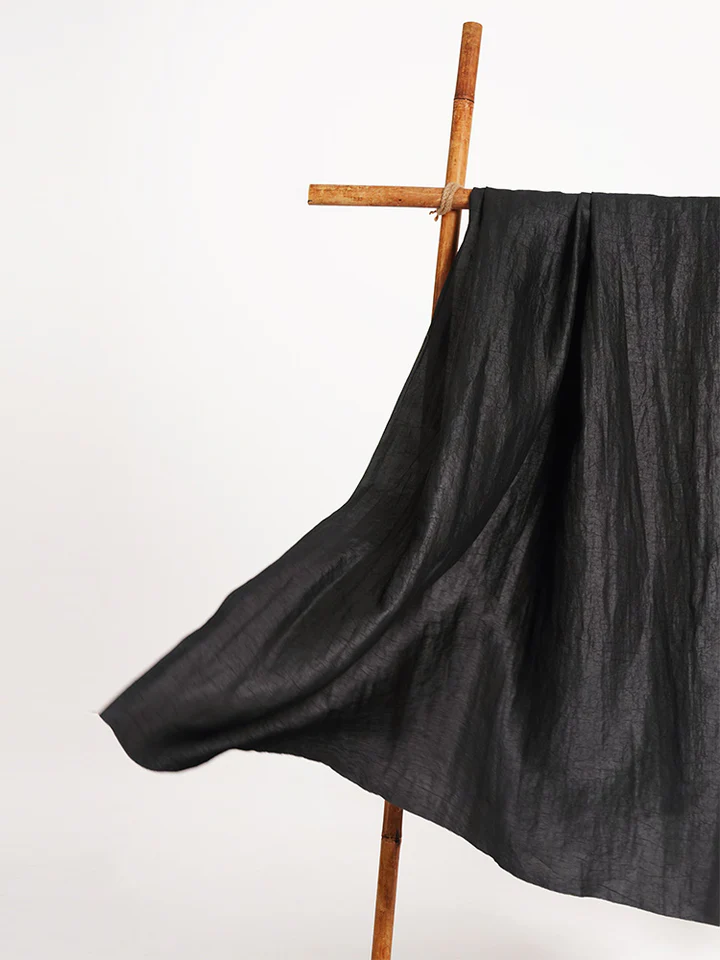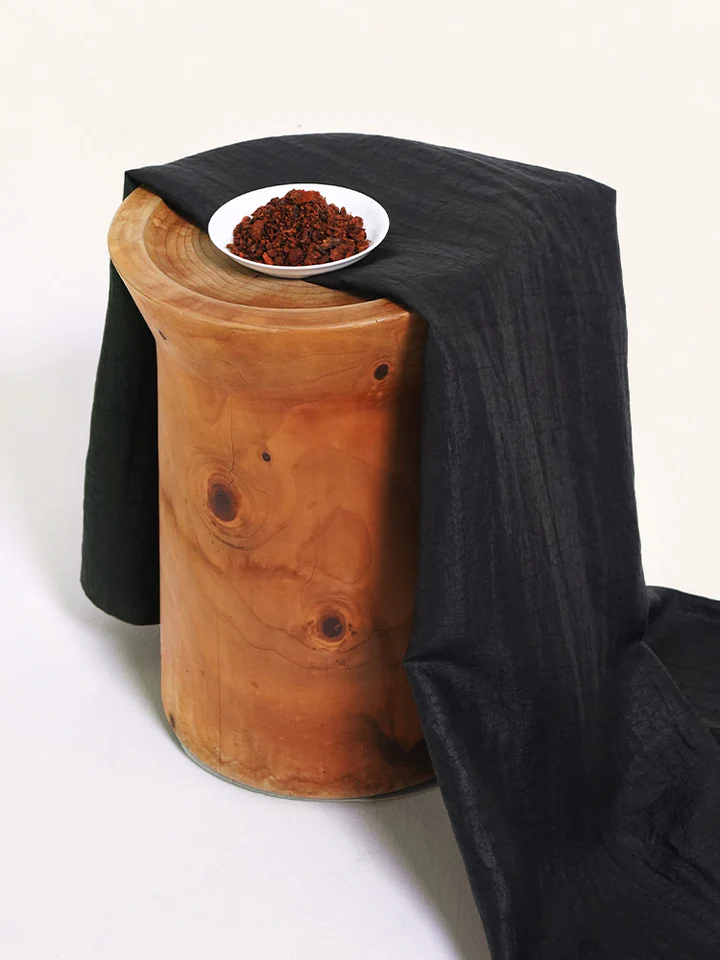Care Instructions

1.Washing: Hand wash only in cold or lukewarm water (below 40°C / 96°F) with a mild, pH-neutral silk detergent. Soak for no more than 5 minutes. Gently press with your hands to clean—do not rub or twist.
2.Drying: Gently press out excess water using a clean towel. Lay flat or hang to air dry in the shade. Avoid direct sunlight or heat.
3.Ironing: If necessary, iron on the reverse side with a pressing cloth while slightly damp, using a low-temperature (silk setting) iron.
4.Storage: Store in a cool, dry, and ventilated area. Use cotton garment bags instead of plastic. Avoid mothballs or scented sachets that may react with the fabric.
What to Avoid
Do not machine wash, tumble dry, or dry clean, as these methods may damage the natural botanical coating.
Do not use bleach, alkaline detergents, or enzyme-based products.
Do not soak the fabric for long periods or wring it forcefully.
Do not iron directly without a cloth or use high temperatures.
Do not expose the garment to direct sunlight for extended periods.
Do not hang it on thin or sharp-edged hangers that could distort the shape.
FAQs
- Q1: Can I machine wash Xiang Yun Silk if I use the gentle cycle?
No. Even on a gentle cycle, the agitation and spinning can damage the delicate fabric and affect its botanical dye.
- Q2: Why does my Xiang Yun Silk garment have a natural scent?
This is due to the traditional plant-based dyeing process using Dioscorea root and river mud. It is a natural characteristic and will fade over time.
- Q3: What if the fabric fades slightly after a few washes?
A softening of tone is normal for naturally dyed textiles and reflects the fabric’s authenticity. Proper care helps slow down the fading process.
- Q4: Can I dry clean it if I tell the cleaner it's silk?
It’s still not recommended. The chemicals used in dry cleaning can strip the botanical dye and damage the finish.
- Q5: What should I do if it gets stained?
Spot clean gently with cold water and a mild detergent. Do not rub harshly. For persistent stains, consult a professional experienced with traditional silk fabrics.
Learn More
Care Instructions
1.Washing: Hand wash only in cold or lukewarm water (below 40°C / 96°F) with a mild, pH-neutral silk detergent. Soak for no more than 5 minutes. Gently press with your hands to clean—do not rub or twist.
2.Drying: Gently press out excess water using a clean towel. Lay flat or hang to air dry in the shade. Avoid direct sunlight or heat.
3.Ironing: If necessary, iron on the reverse side with a pressing cloth while slightly damp, using a low-temperature (silk setting) iron.
4.Storage: Store in a cool, dry, and ventilated area. Use cotton garment bags instead of plastic. Avoid mothballs or scented sachets that may react with the fabric.
What to Avoid
Do not machine wash, tumble dry, or dry clean, as these methods may damage the natural botanical coating.
Do not use bleach, alkaline detergents, or enzyme-based products.
Do not soak the fabric for long periods or wring it forcefully.
Do not iron directly without a cloth or use high temperatures.
Do not expose the garment to direct sunlight for extended periods.
Do not hang it on thin or sharp-edged hangers that could distort the shape.
FAQs
- Q1: Can I machine wash Xiang Yun Silk if I use the gentle cycle?
No. Even on a gentle cycle, the agitation and spinning can damage the delicate fabric and affect its botanical dye.
- Q2: Why does my Xiang Yun Silk garment have a natural scent?
This is due to the traditional plant-based dyeing process using Dioscorea root and river mud. It is a natural characteristic and will fade over time.
- Q3: What if the fabric fades slightly after a few washes?
A softening of tone is normal for naturally dyed textiles and reflects the fabric’s authenticity. Proper care helps slow down the fading process.
- Q4: Can I dry clean it if I tell the cleaner it's silk?
It’s still not recommended. The chemicals used in dry cleaning can strip the botanical dye and damage the finish.
- Q5: What should I do if it gets stained?
Spot clean gently with cold water and a mild detergent. Do not rub harshly. For persistent stains, consult a professional experienced with traditional silk fabrics.
Learn More
- Le choix d'une sélection entraîne une actualisation complète de la page.







